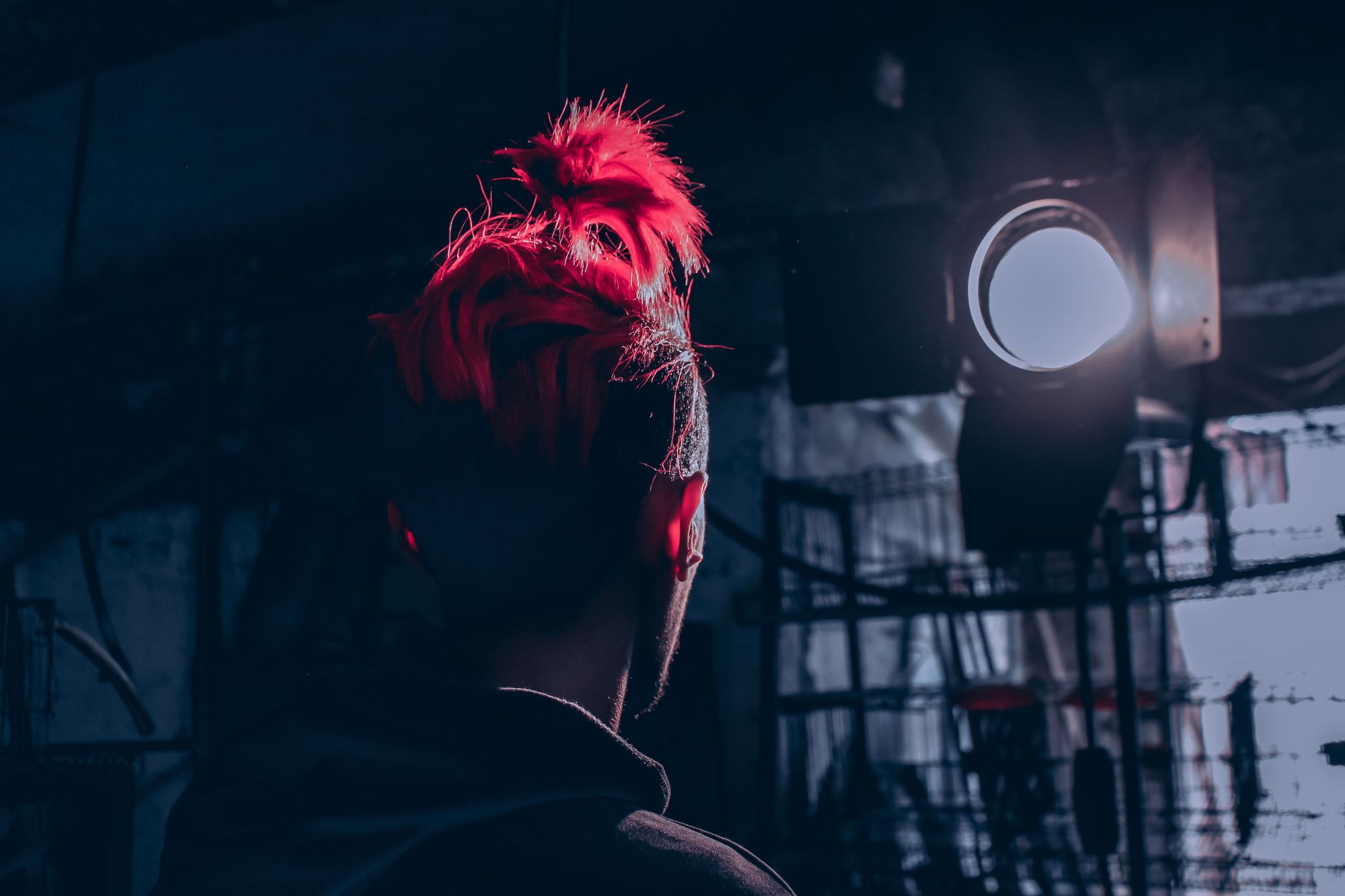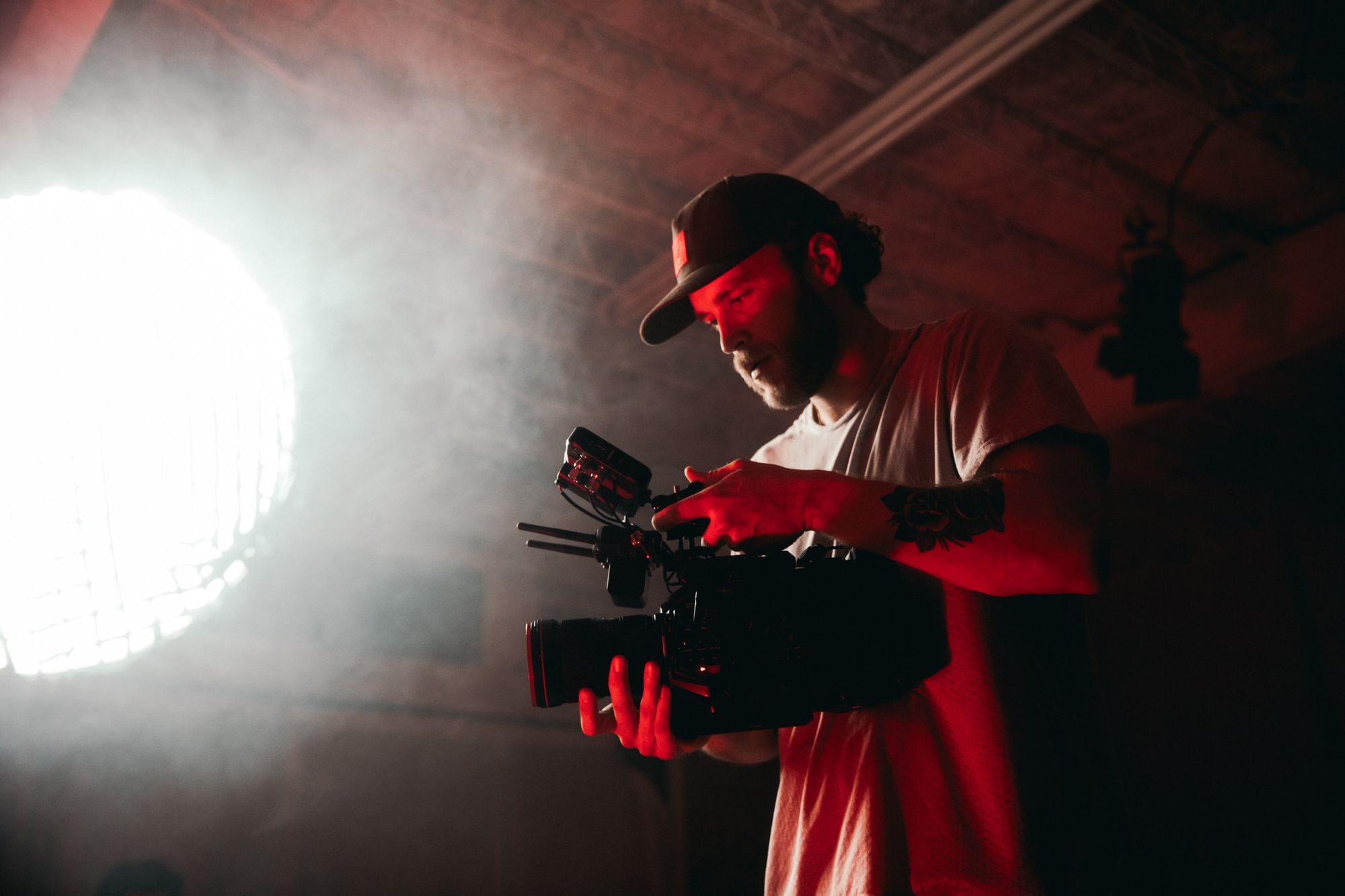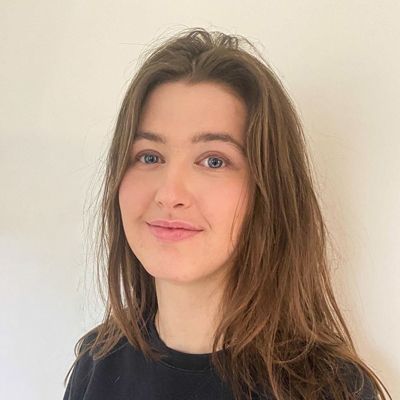Key Light's Impact on Film & How You Can Manipulate it
Hire film gear from local filmmakers.

Hire film gear from local filmmakers.
Lighting can impact how your shots look and feel and is crucial for telling a good story. As a beginner in filmmaking, you might want to start by understanding the lights that form a basic setup, one of them being: the key light.
What is a key light?
The key light is the most fundamental film light you find in a studio since it is responsible for exposing your subject in the first place. It will be the brightest light in your set and usually faces the subject.
If you have one light source, this is the role it will play.
The key light is the first you care for. Being the primary source of exposure, this will be the brightest light on set. Typically, you position it in front of your object, angled between 15 and 45 degrees from the camera. It will illuminate one facet of your subject and create a shadow on the opposite one.
Why use a key light?

First and foremost, you use a key light to illuminate your scene, and it will expose and highlight your subject's features: its shape, size, colours, texture. Essentially, you turn the key light on to let your viewer know if you are shooting a person or a piece of paper.
Additionally, how you manipulate this light (alone or paired with extra lights or reflectors) will dictate how your scene looks and feels.
How to use a key light in filmmaking
The key light is often used as a component of the three-point lighting setup (a popular and beginner-friendly setting that includes three lights), but you can apply it in many film lighting techniques.
As to positioning, one thing is for sure: the key light must be in front of your subject (to the right or left of the camera). Then, the way you choose to adjust its angle and distance will depend on what atmosphere you aim to create. For instance, when you increase the angle, the lighting will become progressively less flat, there will be more shadows and a more dramatic effect to the scene.
Regardless, there are various changes you can make to your key light to alter the mood of your shoots, and some have been standardized for you to use as reference, like the low-key lighting and the high-key lighting.
The two types of key lights

Low-key lighting
Dramatic, suspicious, or scary: this is the type of lighting used for the evil laugh and the puzzled detective.
Low-key lighting is a style that accentuates shadows and dark tones by increasing the contrast between the subject and the environment (there are little to no whites and mid-tones). The style is achieved by using hard source lighting (harsh and bold) within the scene and minimizing or eliminating the fill light. Also, to avoid light being reflected on surfaces and ruining the darkness of your frames, low-key lighting is most effective when shot against dark backgrounds.
Still not sure about what I mean? Think of the last movie scene that made you feel uneasy and unsure about how the character would behave. There you go.
High-key lighting
Unlike the previous, high-key lighting delivers a bright homogenous look, free from dark tones and heavy shadows.
Use high-key lighting to suggest joy and an upbeat spirit. For instance: health or beauty commercials, sitcoms, comedies, weddings, movies about happy families that wear matching sweaters and own a Golden Retriever, etc. Besides cheerfulness, you can use high-key lighting to produce a glossy heaven-like scenario like hallucinations, ghosts or angels.
The secret to creating high-key frames is using well-sized light sources and delicate shadows. Small light sources produce more rigid contrasts, hence using large softboxes or diffusers is ideal for this style. Pro-tip: a light background will help too.
Get to know the three-point lighting
The 3-point light setup is the most popular light arrangement amongst filmmakers and photographers, and it includes a key light, a fill light and a backlight. The simplicity of this lighting structure (only constituted by three lights) makes it ideal for beginners who aim to understand how lights are positioned and how they behave when adjusted (besides, it gives your frames a nice cinematographic touch).
Learn more about what three-point lighting is and the best tips on how you use it.
Key light FAQ
What is a key light?
The primary light source in your set.
What is fill light?
The fill light is responsible for moderating the shadows left by the key light.
To ease this shadow, you place a fill light (or a reflector to play its role). Logically, this light will be in front of your subject and on the contrary side of the key light. Remember: the point is not to erase shadows and flatten your subject, so the fill light must be less intense than the main one (about 25%-50% less).
What are the types of key light?
Low-key lighting and high-key lighting.






















